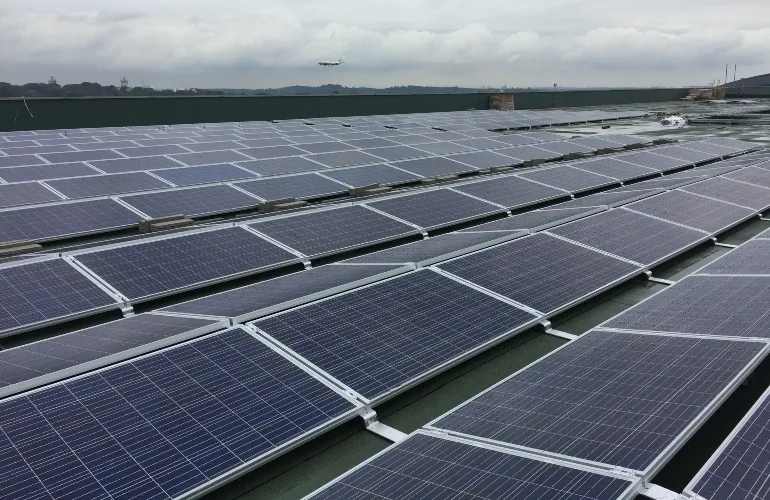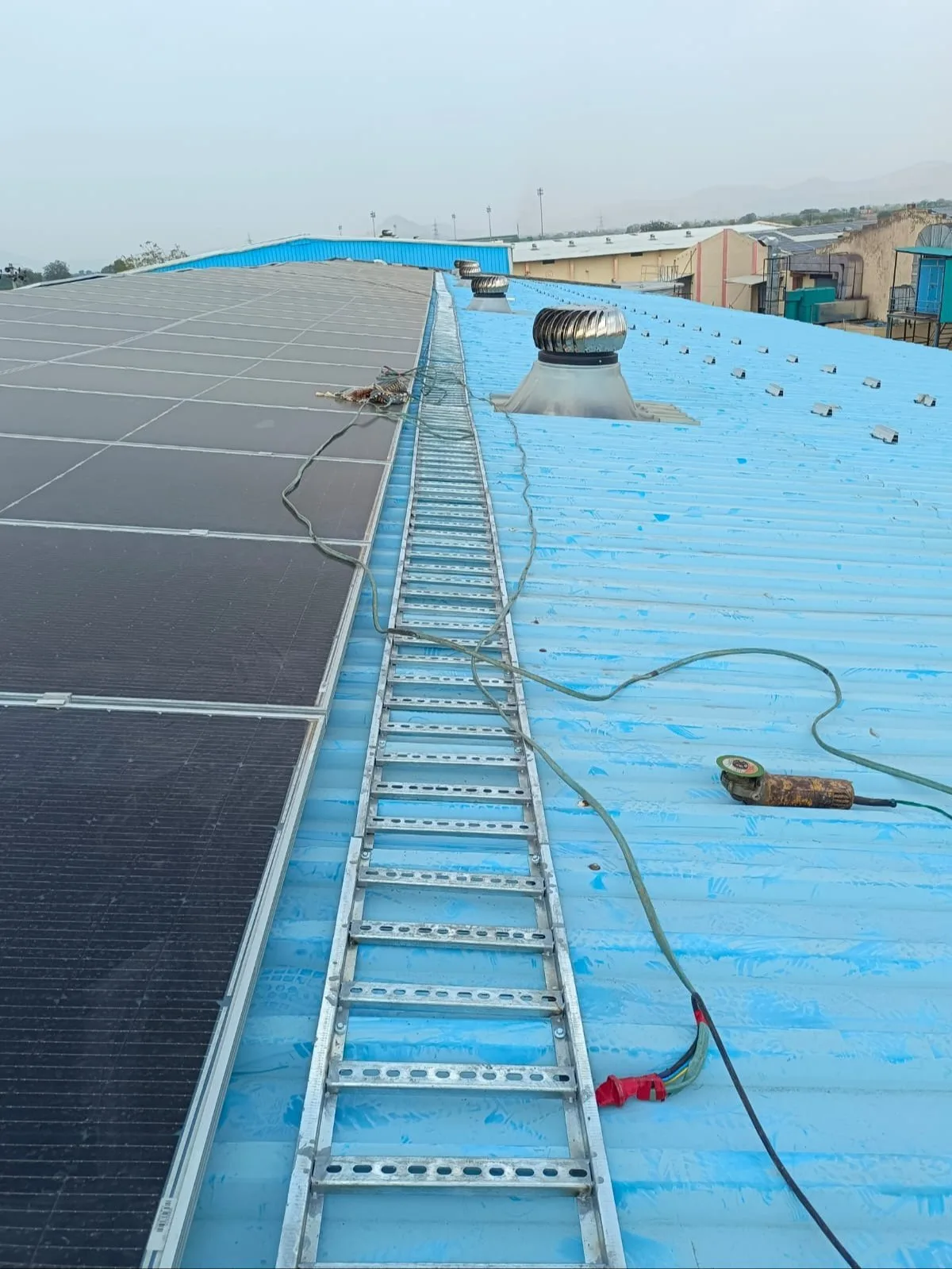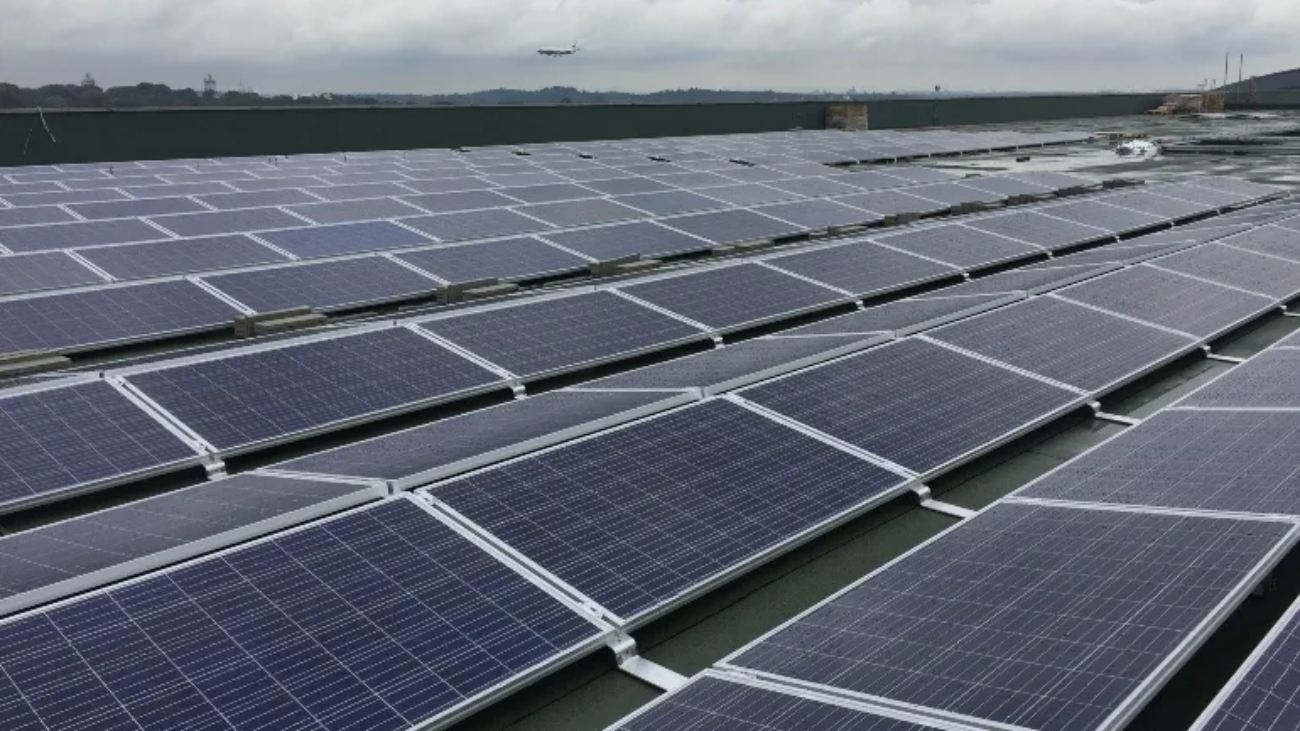
I. Orientation Options (East-West Mounting System)
In our system we used this for Solar panels in photovoltaic (PV) systems can be mounted in different orientations to the optimize the sunlight exposure. The two main options for orienting solar panels are:
- Traditional north/south orientation:
- In the northern hemisphere, panels typically face south
- In the southern hemisphere, panels typically face north
- This allows panels to get direct sunlight exposure throughout the day
- East-west orientation:
- Panels are arranged with the half facing east and the half facing west
- Allows panels to be positioned back-to-back to optimize the space
A. Benefits of east-west orientation:
- Improves power density – more panels can fit per roof area
- Increases total power production
- Easier installation and configuration on many rooftops
- Reduces impact of wind pressure on panels
- Layout can be optimized for the smaller sites
B. Comparisons:
| Orientation | Power Density | Total Power | Ease of Installation | Wind Resistance | Site Optimization |
| North/South | Medium | High | Difficult | High | Limited |
| East/West | High | Medium/High | Easy | Low | High |
Our team analyise the north/south orientation maximizes total power production, east-west configurations allow for easier installation, greater site optimization, and higher panel density – making them suitable for space constrained commercial sites. Project developers should consider these orientation options to select the best fit.
II. Power Production & Density

Accordingly, adopting an east-west panel configuration can lead to improvements in both total power production and power density compared to traditional north/south facing systems.
A. Improved Overall System Power
We orient our module mounting by positioning panels perpendicular to the roofline. East-west arrays enable modules to place very close together without any clearance issues for shade. This denser layout allows us to install more panels per the area of roof.
- With more panels, the overall wattage and energy generation increases substantially. East-west systems can achieve power production improvements of:
- 5-10% over regular north-facing tilted racks
- 20-25% over flat roof systems
- Although the peak output per panel is lower than ideal tilt south arrays, the total aggregate output is still significantly higher.
B. Higher Power Density
Our system provide greater total power, east-west panels maximize the number of modules per square foot or meter. This is extremely beneficial for:
- Land constrained sites
- Commercial rooftops with limited surface area
- Maximizing a project’s ROI
Space constraints rather than demand constraints usually limit commercial projects. Power density improvements have major advantages.
- By packing modules tightly together longitudinally, designers can fit more wattage into the roof orientation “with the grain”.
C. Power Density Increases
| System Type | Modules per Area | Power per Area |
| Flat Roof | Low | Very Low |
| Tilted South | Medium | Medium |
| East-West | High | High |
In situations where roof or land availability is the limiting factor, prioritizing density over peak generation makes financial sense. Our East-west mounting uniformly excels in this area.
III. Cost Effectiveness
The Structura Metal performance the advantages of east-west solar mounting systems provide significant cost savings in several areas:
A. Easier Installation & Maintenance
- Positioning modules in line with the roof rather than perpendicular to it simplifies logistics for installers.
- Less custom mounting, racking, and flashing required
- Conducting ongoing service and panel cleaning is also easier without tilting modules at difficult angles.
- This improves uptime and reduces lifetime operational costs.
B. More Modules per Roof Area
- Higher module density unlocks major financial benefits:
- Reduces soft costs per watt like permitting, inspection, etc.
- Lowers investor risk
- Increases resale value
- We can preserve the surface area to add solar capacity later.
C. Material Savings
- Aligning modules along the roof requires fewer racking and rail components.
- Savings multiply across large commercial installations
- Less robust, lighter mounting hardware is needed due to the lower wind shear.
- The closely packed layout also creates beneficial shading to reduce solar heat gain.
D. Cost Savings
| Area | Estimated Savings |
| Installation Labor | 10-15% |
| Maintenance | 5-10% |
| Soft Costs | 10-20% |
| Racking/Rail | 5% |
These factors demonstrate why east-west systems make financial sense, especially given their space optimization and generation capabilities.
IV. Configuration & Layout
The specialized configuration and layout of east-west solar mounting systems allow for greater density than conventional options:
A. Back-to-Back Positioning
- Modules are oriented perpendicular to the roof ridge
- The array is split, with half facing east and the other west
- No clearance gaps needed between panel orientations
- Enables adjacent rows to be positioned very closely together in a back-to-back arrangement
This unique layout eliminates the spacing requirements imposed by tilting solar modules at an angle or facing multiple directions.
B. Smaller Site Optimization
East-west mounting is especially suitable for optimizing generation on space constrained sites, including:
- Rooftops
- Land-scarce regions like Germany and Japan
- Locations with high property rates
By aligning modules directly with the roof and packing them densely together, this configuration:
- Makes full use of the roof surface area
- Allows projects to maximize their capacity factor
- Carefully balances inter-row shading for smoother power curves
The tight module spacing does require separate electrical architecture for east vs. west strings to prevent mismatches. But with smart design, the gains far outweigh this minor complexity.
V. Panel Orientation
The orientation of solar panels in an east-west array provides complementary advantages over traditional layouts:
A. East and West Facing
- The system is to be divided, with half the panels tilted towards the east and the other half facing west.
- This unique approach balances morning and afternoon generation:
- East modules produce more power as sunrise peaks
- West modules catch late daylight as sunset approaches
- Having two separate plane orientations smooths the aggregate energy delivery curve.
B. Separate Electrical Systems
- Due to their perpendicular angles, the east and the west panel sets cannot be wired together.
- Integrating mismatched strings risks equipment damage or reduced output through string clipping.
- Instead, the dedicated electrical architectures are used for the east versus west groups.
- Each orientation has its own string inverter(s) to aggregate DC power
- The AC outputs are combined and fed downstream toward
This specialized design accommodates the dual orientations used in the system. It ensures optimal performance despite the complex interconnections required.
While requiring more planning, the east-west approach ultimately unlocks major efficiency and density benefits in a reliable, robust manner.
VI. Energy Yield
While the peak power production of each panel is lower with east-west orientation, the total annual energy yield is very competitive:
A. Smoothed Generation Curve
- East-facing panels generate more electricity in the morning
- West-facing panels produce higher output in the late afternoon
- This balances overall energy delivery throughout the day
- Avoids drastic drop-offs when the sun isn’t directly overhead
B. Peak Output Considerations
- Traditional south-facing tilts do maximize solar harvest at solar noon.
- This causes a pronounced spike in the output curve.
- East-west systems see lower peaks but steadier generation.
- Reduces inverter overload risks
- Less dramatic ramp-up/ramp-down capacity needs
- The aggregate impact is a flatter, more stable feed to the grid.
C. Energy Yield Trade offs
| System | Peak Output | Total Energy | Curve Smoothness |
| South-Facing Tilt | Very High | High | Low |
| East-West | Medium | Medium/High | High |
Consequently, while lagging in peak production capacity, east-west mounting compensates with space savings, density gains, and balanced energy yields. Its smoother output helps grid stability and best aligns solar supply with human energy usage patterns.
VII. Capacity
The high-density east-west solar mounting design unlocks substantial capacity increases per unit of roof or land area:
A. More Modules per Roof
By packing panels tightly together in a space-optimized layout, this configuration maximizes use of the roof print.
- Modules aligned longitudinally with ridge
- No tilt or clearance gaps between arrays
- Back-to-back rows placed very close together
This lets developers dramatically increase the module count and wattages that can fit on commercial rooftop builds.
B. Land Constraints and Capacity
In regions with high population density and scarce open space, east-west mounting packs more productivity into small project sites.
- Accommodates more panels vertically and horizontally
- Carefully balances inter-row shading
- Ideal for countries like Germany and Japan with limited solar footprints.

